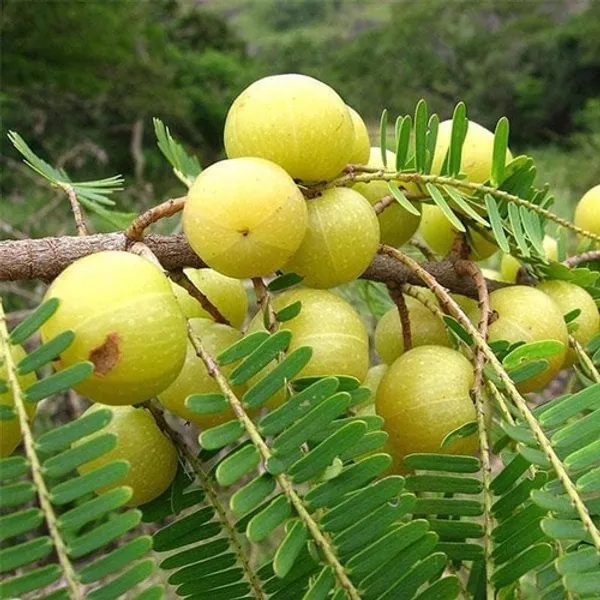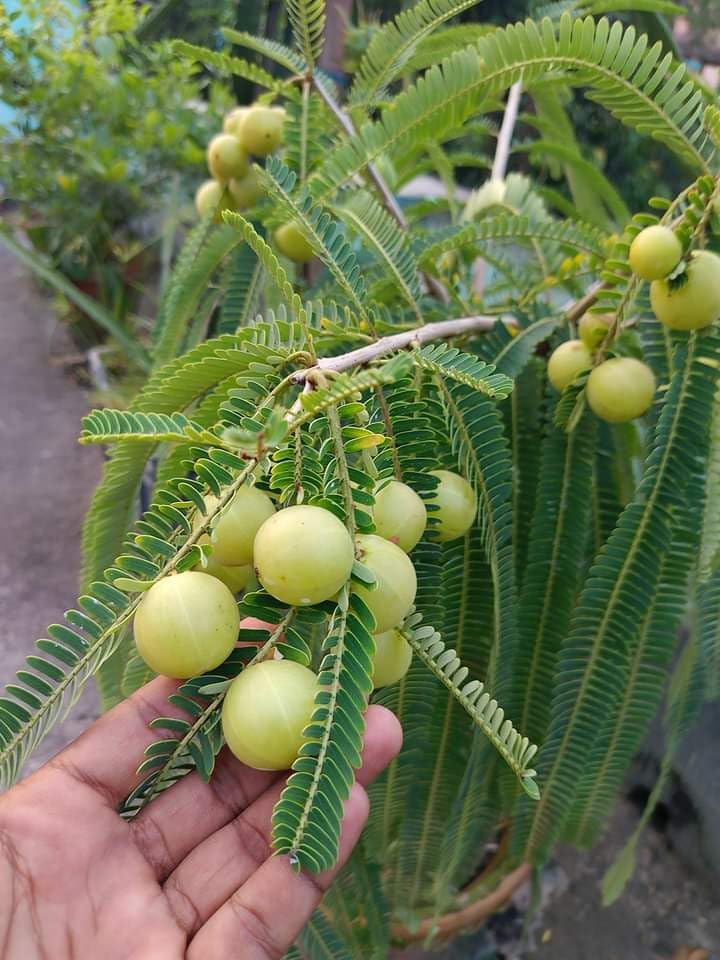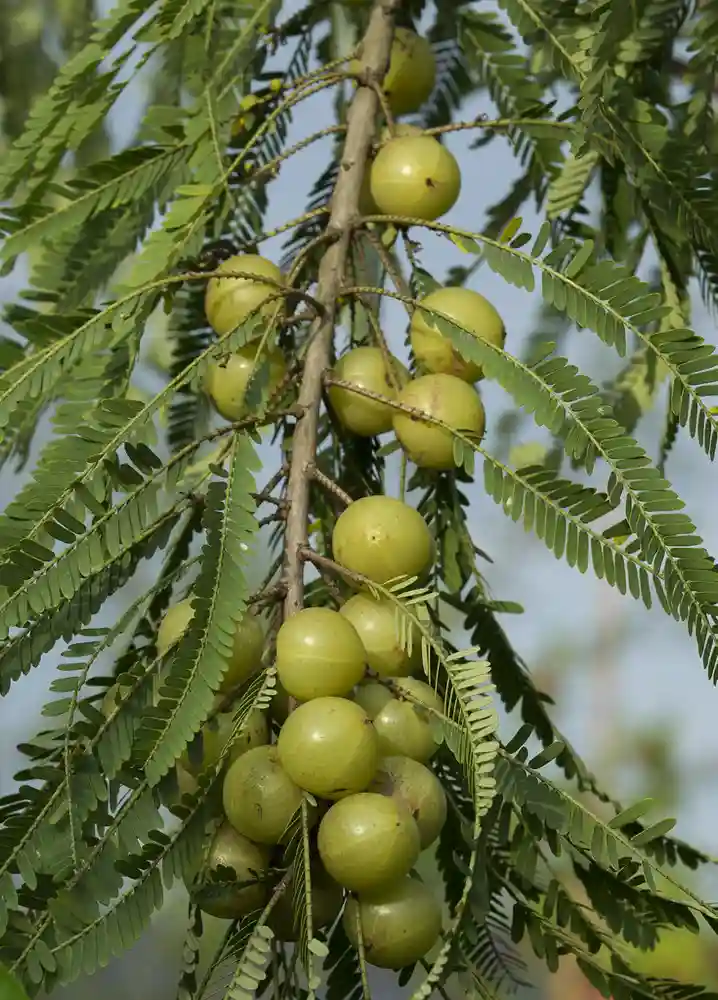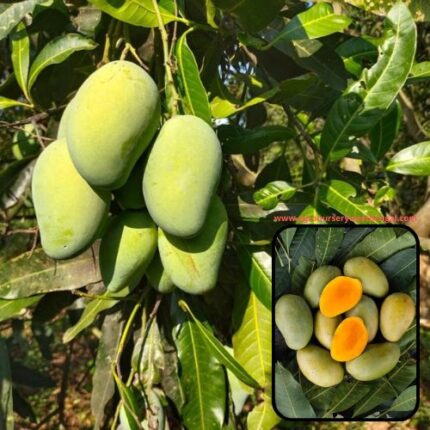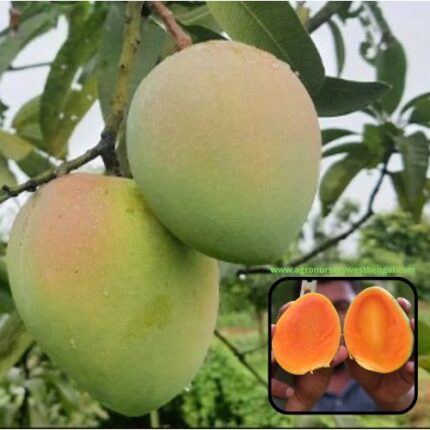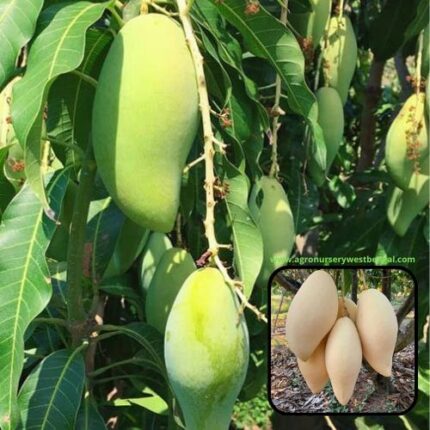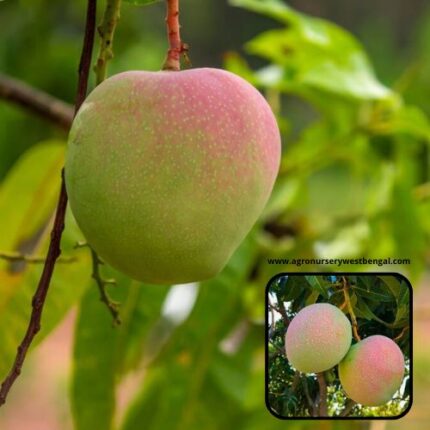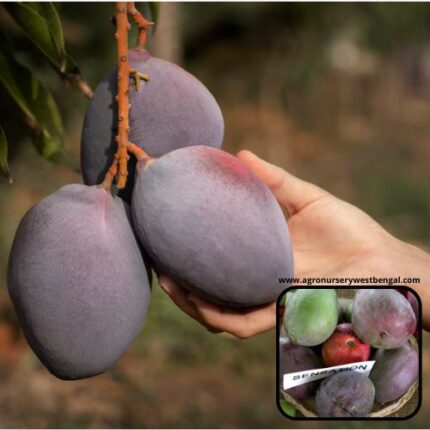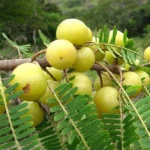
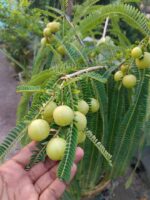
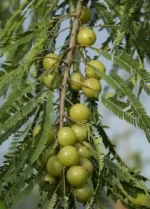
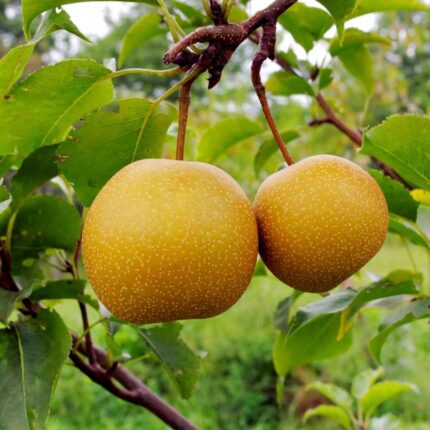
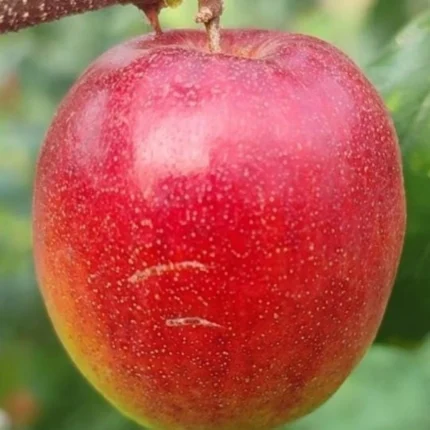
Green Amla fruit plants
₹699 Original price was: ₹699.₹419Current price is: ₹419.
“Green Amla,” also known as Indian Gooseberry, is a highly revered fruit, especially in India, both for its culinary uses and its profound medicinal properties in traditional systems like Ayurveda. Its scientific name is Phyllanthus emblica (or Emblica officinalis).
Here’s a detailed description of Green Amla fruit:
1. Botanical Classification:
- Scientific Name: Phyllanthus emblica (or Emblica officinalis)
- Family: Phyllanthaceae.
- Relationship: It’s often called “Indian Gooseberry” because its small, round fruit visually resembles European gooseberries, though they are not botanically related.
2. The Plant (Tree):
- Appearance: The Amla tree is a small to medium-sized deciduous tree, typically reaching 1 to 8 meters (3 to 26 feet) in height. It has distinctive fine, feathery branchlets with numerous small, light green leaves closely set, giving the impression of pinnate leaves. The bark is mottled.
- Flowers: The tree produces small, inconspicuous greenish-yellow flowers.
- Habitat: Native to tropical and southern Asia, including India, Pakistan, Bangladesh, Sri Lanka, and parts of Southeast Asia. It thrives in various soil types but prefers well-drained loam.
3. The Fruit (Green Amla):
- Appearance:
- Shape: Nearly spherical or perfectly round.
- Size: Small, marble-like, typically ranging from 1.3 to 2.5 cm (0.5 to 1 inch) in diameter, though cultivated varieties can be larger (up to 5 cm or 2 inches).
- Skin: The skin is thin, smooth, and has a distinctive light green to yellowish-green color when ripe. It often features 6 to 8 faint vertical stripes or furrows, making the fruit appear subtly segmented. The skin is tough yet thin and can be almost translucent.
- Flesh (Pulp): The flesh underneath the skin is crisp, juicy, and fibrous. It’s pale green or off-white.
- Seed: In the center of the berry lies a hard, hexagonal-shaped stone (pit) containing 6 small, inedible seeds.
- Taste and Flavor Profile:
- This is the most unique and challenging aspect of Amla for many. It’s notoriously sour, bitter, and highly astringent (mouth-puckering).
- After the initial sour and bitter taste, there’s often a subtle sweet aftertaste, especially if you drink water immediately after consuming it. This phenomenon is often described as the water turning sweet.
- The taste is quite potent and distinctive, making it unique among fruits.
- Aroma: It has a faint, earthy, and slightly tart aroma.
4. Ripeness:
- Green Amla is typically harvested during the winter months when the fruits are mature and have reached their characteristic light green/yellowish-green color. They are quite firm when ripe.
5. Culinary Uses: Despite its intense raw taste, Amla is extensively used in Indian cuisine:
- Pickles (Achar): One of the most popular uses, where the fruits are preserved in oil and spices, which mellows their tartness.
- Chutneys: Used to make tangy and spicy chutneys.
- Murabba (Preserves): A traditional sweet preserve made by soaking Amla in sugar syrup until it’s candied. This significantly reduces the bitterness and astringency.
- Juices and Candies: Often juiced (diluted with water or mixed with sweeter fruits) or processed into candies and digestives.
- Cooking: Used in some lentil dishes (dal) or curries for a souring agent.
- Fresh with Salt: Many people eat fresh Amla with a sprinkle of black salt to cut down on the bitterness. Soaking them in salt water before preparation is also common.
6. Nutritional Value and Health Benefits (Amla’s Superfood Status): Amla is considered a “superfruit” and is a cornerstone of Ayurvedic medicine due to its incredible nutritional profile:
- Exceptional Source of Vitamin C: Amla is one of the richest natural sources of Vitamin C, containing significantly more than oranges (often cited as 20 times more). This makes it a powerful antioxidant and immune booster.
- Rich in Antioxidants: Beyond Vitamin C, it’s packed with other potent antioxidants like polyphenols (ellagitannins, flavonoids, gallic acid, ellagic acid), which combat oxidative stress and inflammation throughout the body.
- High in Dietary Fiber: Aids in digestion, regulates bowel movements, and can help prevent constipation.
- Minerals: Contains essential minerals like iron, calcium, phosphorus, magnesium, and chromium.
- Blood Sugar Management: Traditionally used and researched for its potential to help regulate blood sugar levels due to its soluble fiber content and other compounds.
- Heart Health: Contributes to heart health by helping to manage cholesterol levels and blood pressure.
- Immunity: Its high Vitamin C content and antioxidants significantly boost the immune system.
- Hair and Skin Health: Widely used in traditional remedies and commercial products for promoting healthy hair growth, preventing premature graying, and improving skin complexion.
- Eye Health: Rich in Vitamin A and C, beneficial for vision.
- Detoxification: Believed to aid in cleansing the body.
In summary, Green Amla is a small, round, light green fruit with a uniquely intense sour, bitter, and astringent taste. Despite its strong flavor, it is highly valued and widely consumed in India for its immense health benefits, particularly its unparalleled Vitamin C content and powerful antioxidant properties

